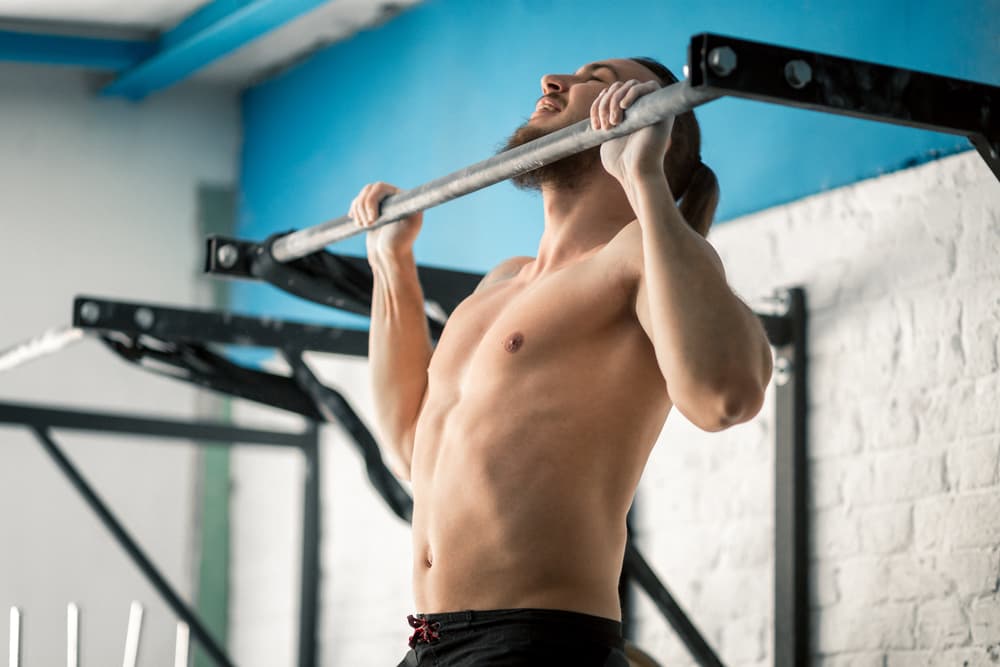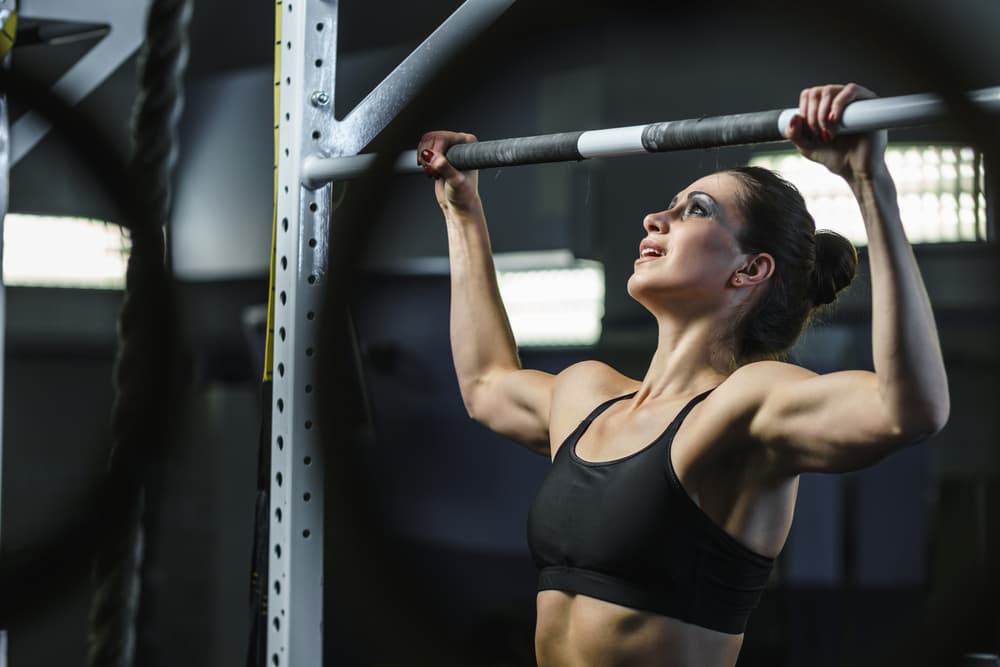Installing a pull or chin-up bar at home is perfect for strength training and muscle activation. But knowing the correct pull-up bar height is also crucial for safety and optimum benefits.
Ideally, mount your pull-up bar with at least 41 to 51 cm (16 to 20 inches) clearance under the ceiling. That way, you can perform full pull-ups without hitting your head. Also, for an average height of 173 cm (5’8”), you need to allocate at least 213 cm (7 ft) from the ground.
Your height and space available are the primary factors to consider when installing a pull-up bar and determining how high it should be.
Here are the other details you need to know and understand.
What is the Correct Pull-Up Bar Height?
You have to make two measurements to answer this question.
One is how far the bar should be from the ceiling, and the other is how high the bar should be from the floor.
For this, you’ll need a good old measuring tape.
Now, the goal is to mount the pull-up bar, so you can grab it while standing on your toes and pull up without hitting your head.
And generally, you’ll need 41 to 51 cm of headspace between the ceiling and your pull-up bar.
This headspace can vary, depending on how you want to use the bar.
For instance, if you want optimum results, your sternum should reach the same level as the bar.
That means your clearance should have room for your head, neck and upper torso.
Try measuring the middle of your sternum up to the top of your head, then add about 5 cm to get your ideal headspace.
Next, you have to measure the distance of the bar from the ground to ensure your legs have room to bend and extend.
To do this, stand on your toes against the wall. Then, make a fist with your hand and stretch your arm up as high as possible.
Make a marking at the highest point, then use the measuring tape to get your pull-up bar height from the floor.
Add about 5 to 12 cm more to this as a safety net.
Afterwards, use your ceiling and floor measurements to get the correct pull-up bar height.
If several people will be using the bar, base your measurements on the tallest person.
The shorter users can always use a step tool to reach it during training.

What If I Have Low Ceilings?
You don’t have to give up on your at-home strength training if you do not meet the ideal pull-up bar height requirements.
Installing a pull-up bar is still possible on low ceilings. But adjustments are necessary.
One solution is to mount it with a clearance space enough to get your chin past the bar.
Another alternative is to install it where you can perform pull-ups with bent knees.
You can measure this by facing the wall and kneeling on the floor.
Next, make a fist with your hand and stretch your arm up.
Mark the highest point, and add about 5 to 12 cm as an allowance for comfort.
Both solutions may limit your movements a bit.
But they should still give you the same body-building and strength benefits without hurting yourself.
Where Should I Mount My Pull-Up Bar at Home?
The pull-up bar height is not your only crucial consideration when installing this equipment.
You also need to assess your workout space.
Am I allowed to make drill holes in the wall or ceiling? Do I have enough room for a free-standing tower? Can my chosen area support the load of my body weight?
Address these questions when choosing the perfect spot for your pull-up workout.
Ultimately, your answers should help you decide which type of pull-up bar to get.
For ideas, here are some potential installation areas you can consider:
- The ceiling. This place is best if you can bolt the equipment and prefer a permanent fixture. Installation for this can be challenging, though. But it should give you more leg space for easy moving and swinging.
- The wall. Like the ceiling installation, a wall-mounted pull-up bar is a permanent fixture that requires drilling. It’s the most stable area for your pull or chin-up bar. Plus, it allows a wide range of bar exercises.
- The door. This one is best for users who prefer to skip all those pull-up bar height measurements and a laborious installation. It’s not as stable, though. But a door-mounted pull-up bar is the most budget-friendly. Plus, you can move it anywhere when needed.
- Any large room. Power towers or racks with a free-standing pull-up bar are perfect if you have plenty of vacant spaces at home. This one is versatile and stable without the need for drill holes. But it takes up a lot of room.
From my previous article, you can learn more about the different pull-up bar types, including the pros and cons of each.

Conclusion
Pull-up exercises are excellent for building muscles and strength.
They also go well with your cardio routine.
However, you might compromise these benefits if you do not install your bar correctly.
Also, improper mounting can put your safety at risk.
So, before getting a high-quality chin or pull-up bar, evaluate your space first.
Check if your wall or ceiling is strong enough to withstand constant pressure or heavy loads.
Also, make sure that your choice of equipment matches your area, body weight, needs and exercise preferences.
Lastly, don’t forget to determine your ideal pull-up bar height.
Take the time to make accurate measurements.
That way, you’ll maximise your fitness investment and pull-up sessions.
Related Questions
1. Are there beginner exercises for chin-up bars?
Beginners can start with a list of chin-up bar progression exercises before proceeding to advanced moves. Dead hangs, isometric holds, negative pull-ups, basic chin-ups, L-sits and burpee pull-ups are good examples. You can do these strength training exercises three times a week to give your body enough time to recover. Alternatively, you can also incorporate cardio in between your chin-up bar routine.
2. Can I use the pull-up bar to build my abs?
There are several pull-up bar exercises for the abs that you can do, depending on your fitness level. For instance, you can start with beginner-friendly moves like hanging knee raise and Garhammer raise. Then, you can progress to intermediate ones, such as the hanging straight leg raise and basic L-sit hang. When ready, put your core to the test and try doing the toes to bar and windshield wiper move.
- Is Eating Right Before Workout Ideal? - 5 February 2025
- How Do Smart Treadmills Enhance Workouts? - 4 February 2025
- Why Does My Skin Itch After Using a Massage Gun? - 3 February 2025
